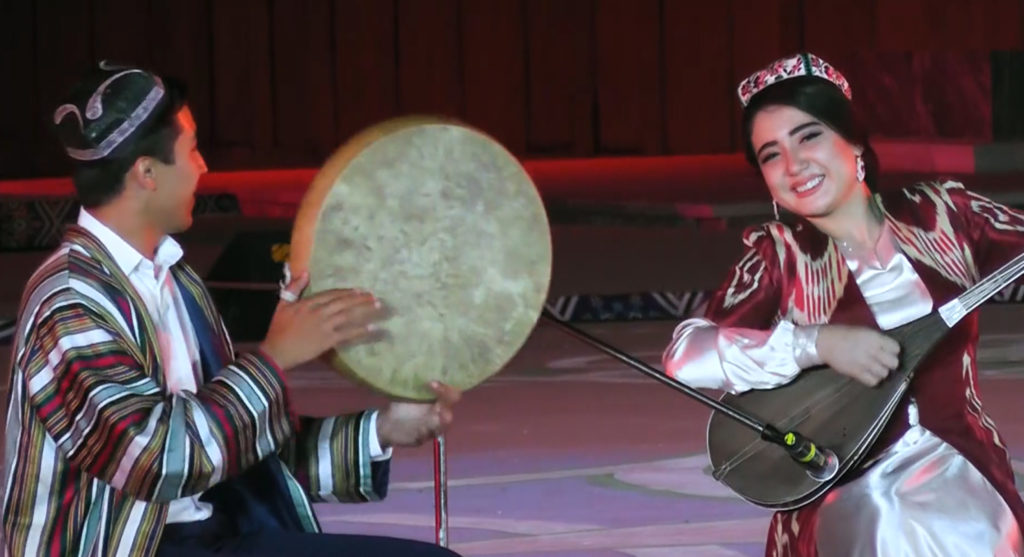The Sharq Taronalari Festival of International Music takes place in Samarkand, Uzbekistan every two years. 2019 was the 12th edition, and my 4th time in attendance.
The Sharq Taronalari Festival provides an opportunity to hear music not generally well represented on the festival stages we are more familiar with. Central Asia is represented as are all of the ‘stans, along with acts as far-flung as a kokle playing and singing group from Latvia, a virtuoso harpist from Mandalay and a dancing duo from Fiji.
Shooting the festival is an ordeal all by itself and I was approached by more than one person who noticed that I was almost walking dead toward the end. But that end was indeed worth waiting for. We were not expecting any further acts because the final act was not on the program. But there was one more performance, and it was superb. One journalist came over to me as I was breaking down my rig and referred to Ms. Abdurashidova’s set saying ‘As far as I am concerned this was the best thing I have heard at the festival.”
I held off on publishing this performance because I kept hoping that I would get the board audio to synch up with it. There are nuances that this video simply does not convey, particularly the clarity of the high notes; audience noise can also be a distraction. But almost one year later, I have given up that misguided hope, but feel that it’s still worth it to put the video out there.
Mehrinigor Abdurashidova plays the dutar, a two stringed lute. The strings are made from silk. The art of this instrument requires mastering its refined resonances and sustains. It is mostly a rhythm instrument, yet it can express highly embellished melodies. Looking at Ms. Abdurashidiva’s right hand technique is a hypnotic experience, as it seems to hover like a hummingbird at times, moving faster than the eye can take it in.
Ms. Abdurashidova chose that night to limit her performance to dances, and it helps to know this, to envision the dancing that would be done to this music. Uzbeks, I should add, are definitely a dancing people. They are ready to get up and dance any time they hear music, and I think that’s wonderful. Here, the chemistry between the drummer and the dutar player is intense and intuitive. Every now and then Mehrinigor allows herself to throw in a few dance moves and it’s welcoming, graceful and full of fun.
The “castanets” that are played by Mr. Iliev are called kayrok, and they are simply stones that are played two to each hand with great precision and complexity. This is music from the rural north of Uzbekistan, and the crowd was familiar with it and roared its approval. Backstage behind the Registan, folks were dancing up a storm!

I regret that I can only offer you my camcorder’s sound. But there is enough spirit and inspiring artistry to make up for that, I think.
Brava, Ms. Abdurashidova.
My thanks to duduk maestro Arsen Petrosian for allowing me to use his ensemble’s music for the opening sequence.
Leave a Reply